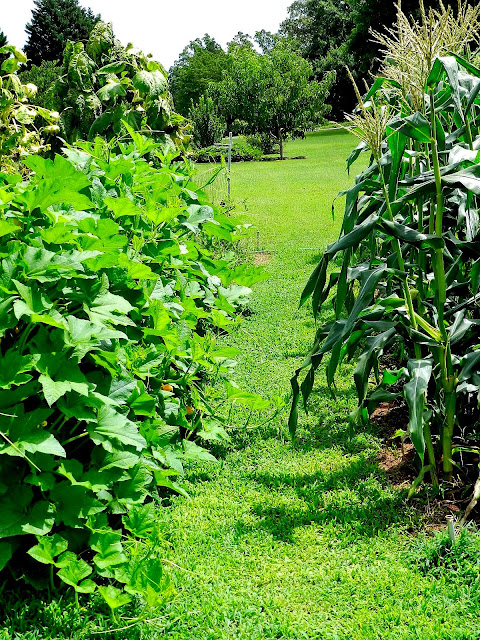 |
| Sweet corn - what we've been waiting for all summer! |
 |
First everbearing 'Ozark Beauty'
strawberry of July. |
We harvested our first sweet corn on the 4th of July, what a treat. Last summer, corn ear worms were in most of the ear tips, but this year we haven't seen any. In addition to disking the field well to turn up overwintering cocoons, we planted a different, resistant variety. Every ear is beautiful and filled to the tip. Of everything we grow, we have the best success with corn. We have perfected our growing technique: rotating fields, using a nitrogen-fixing cover crop, planting when soil is warm, and cultivating until plants are knee-high using a hilling technique that helps plants stand up to wind storms. Lots can still go wrong, animals for example, and we have live traps if we need to transport a critter to the next county. What we cannot eat fresh from this year's first perfect crop is being blanched, cut from the cob, and frozen for winter enjoyment. A second crop is just now tasseling out and will be set to harvest around the first of August.
 |
| 'Granddaddy' tomato, a little bigger than the bun! |
July is reaping and preserving time in our little homestead; we've already canned dozens of quarts of green beans and dill pickles, and we have frozen bell pepper halves and chopped pepper pieces. Beans, cukes, and peppers are slowing down as summer heat rages on, and a couple of our zucchini plants are turning yellow - they must have been hit with vine borers; we have two more.
Tomatoes are really coming in now, and melons are swelling for a late-July harvest. We will be appreciating the first everbearing strawberries joining our summer ensemble as peaches continue through this month.
Pumpkins, the latest crop of our summer garden, are just getting a growth spurt and are opening fruiting flowers for pollination. Want brussels sprouts for Christmas? Now is the time to plant seeds indoors so they are transplanting size by September.
 |
| The garden in July. |
 |
| The pumpkin patch is just getting going; fruiting blossoms are open. |





















